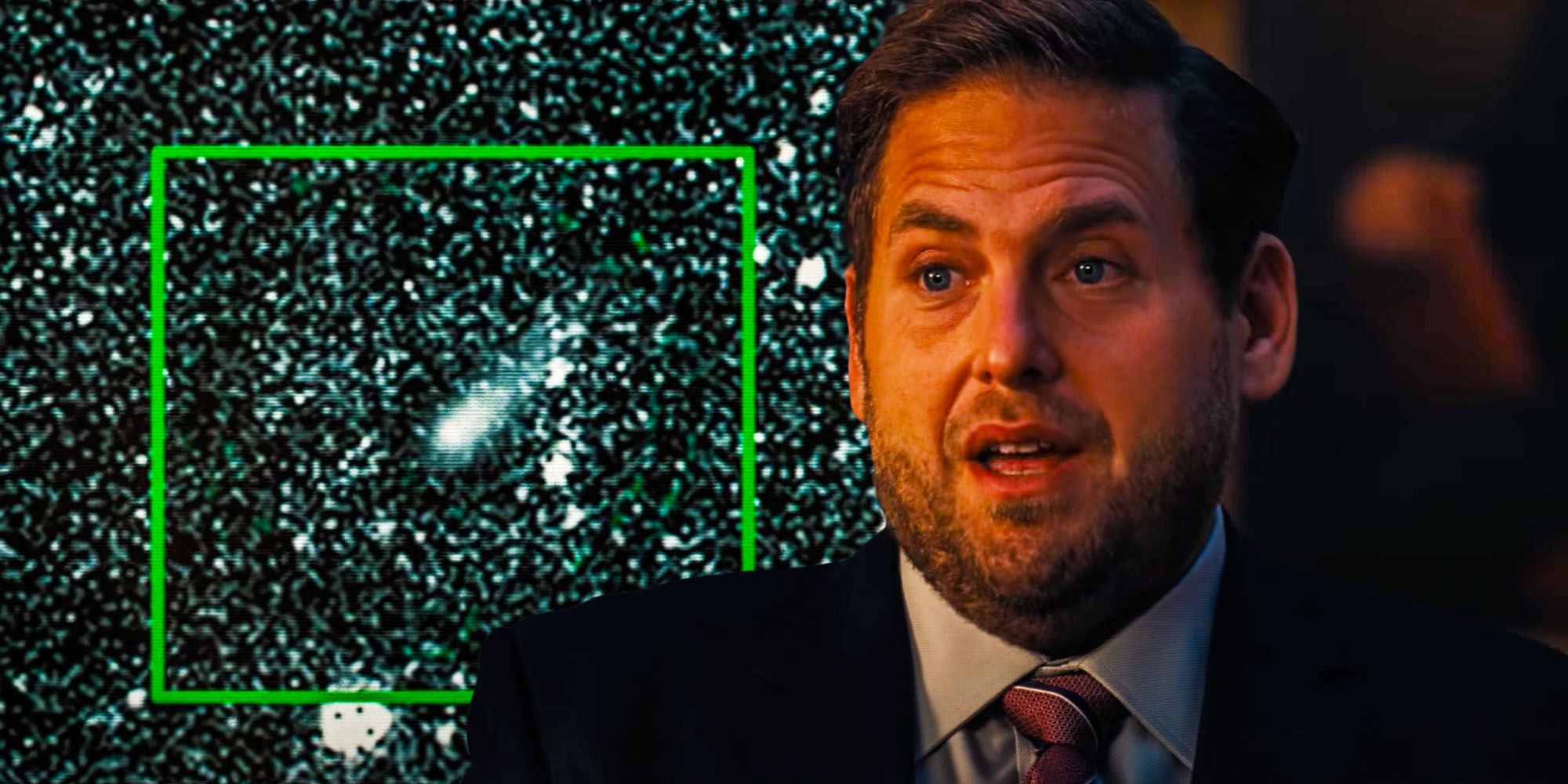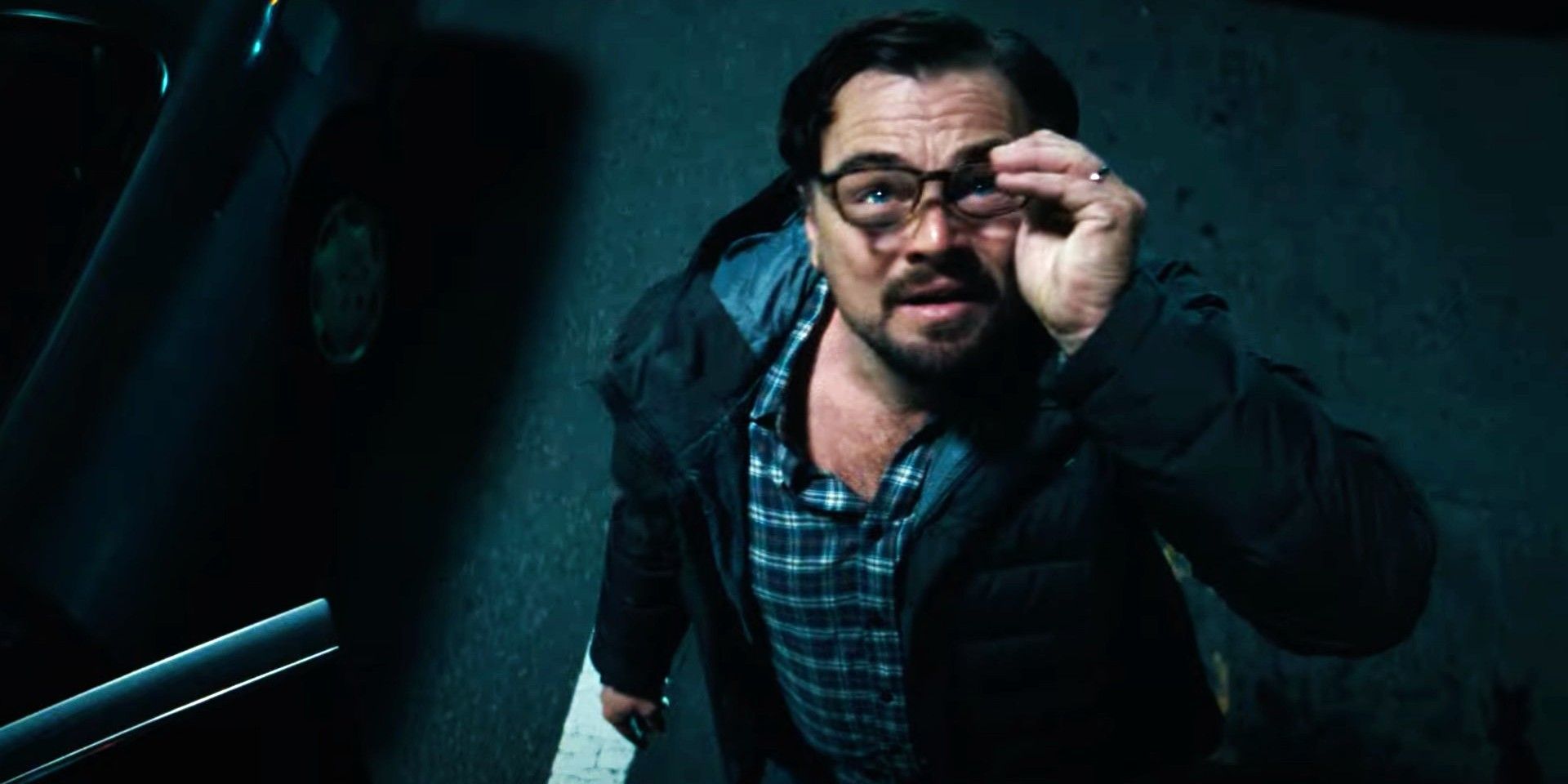Warning: The following contains SPOILERS for Don't Look Up.
Adam McKay just unleashed his doomsday satire Don't Look Up upon the world, and here's a breakdown of the real science behind the movie and whether or not the disaster ending could really happen. There have been plenty of apocalypse movies before Don't Look Up sparked by everything from alien invasion to climate change. In the Leonardo DiCaprio and Jennifer Lawrence-led film, the apocalypse is brought about by a catalyst that has been used in a number of '90s disaster movies including Armageddon and Deep Impact: a comet from deep space. While much of the science in other disaster movies isn't necessarily sound, Don't Look Up's ending significantly deviates from this trend.
Michigan State University doctoral candidate Kate Dibiasky (Jennifer Lawrence) finds a comet from deep space hurtling towards Earth. She and Professor Randall Mindy (Leonardo DiCaprio) try to make a case to save the world before the six-month window runs out and the miles-wide comet destroys Earth. Their concerns are laughed off by President Orlean (Meryl Streep) and her obnoxious son Jason (Jonah Hill), so the scientists try to take their story to the media. After appearing on a morning fluff show, opposite hosts Brie Evantee (Cate Blanchett) and Jack Bremmer (Tyler Perry), the President decides to take them seriously. Their efforts to blow the comet off course are deterred when tech billionaire and campaign donor Peter Isherwell (Mark Rylance) decides the comet contains precious resources. Don't Look Up's A-list cast of characters are forced to watch as the comet collides with Earth, bringing about the end of the world.
While Don't Look Up features a number of more unrealistic elements, there's certainly some broader scientific truth threaded throughout. Indeed, the terrifying part of Adam McKay's apocalyptic satire is that much of the science is actually sound. The Anchorman director did a lot of research beforehand to state his case for Don't Look Up. Consequently, what happens in the movie potentially could happen in real life. So, without further ado, here's the real science behind the satirical film.
Adam McKay Consulted A Real Scientist For The Story
Despite Don't Look Up's divisive reviews, Adam McKay did a lot of hard work to make sure that his movie was based on scientific reality. The director hired astronomer Dr. Amy Mainzer as the main science consultant for the film. Mainzer is a former senior research scientist at NASA's Jet Propulsion Laboratory and now serves as a professor at the University of Arizona, teaching planetary science. Her main area of study, unsurprisingly, is asteroids and comets that have the potential to make a journey toward Earth. In a recent interview, Mainzer discussed the possibilities of near-Earth objects and how her research influenced the storyline of Don't Look Up (via Den of Geek), confirming much of what happens in the movie could very well happen in reality. McKay contacted Dr. Mainzer several years before the project had begun, and her involvement in the film included everything from costume design to the film's premise.
The Six-Month Window Is Accurate
The fact-based and proven real-world science behind other sci-fi movies is often flimsy at best, but Don't Look Up's six-month window until Earth's destruction is actually real. Dr. Mainzer explained that she purposely chose a long-period comet, a comet that comes from deep space because the size and velocity of such an object could realistically hit Earth with such speed. According to the astronomer, "There can sometimes be a very short gap from when we find one of these things to when they make their closest approach to the Sun, because they move so fast […] we found the object in late March and by early July, it was already making its close approach to the Sun. So in this case, six months from discovery to close approach or impact is pretty realistic for this class of object." For those who thought it was an exaggeration, Leonardo DiCaprio's horrifying death scene is completely feasible. Since scientists are tasked with finding these planetary bodies before they can become a threat, the terrifying reality behind a six-month timeframe before total annihilation is wholly accurate.
The Comet Was Modeled On A Real One
In view of the fact that comets like this are real and can approach Earth at an alarming rate, one has to wonder if the planetary object is based on something factual. Since Don't Look Up's characters are based on real people, there's no reason that the comet shouldn't be either. Unsurprisingly, the comet is, in fact, modeled after a real one. According to Dr. Mainzer, the comet in Don't Look Up is patterned after Comet Neowise, which was discovered in 2020. According to NASA's Earth Observatory, the comet was discovered on March 27th, 2020 by NASA’s Near-Earth Object Wide-field Infrared Survey Explorer (NEOWISE) spacecraft (hence its name). Like the large comet in Don't Look Up, Comet Neowise measures about 5 km (3 miles) in diameter. However, while the comet made its approach toward the sun in July of that same year, but won't be viewable again for another 6,800 years.
Why Don't Look Up Used A Comet Instead Of An Asteroid
Viewers with any sort of scientific knowledge may be wondering why Don't Look Up chose a comet over an asteroid for the apocalypse. Dr. Mainzer explains that the science behind this choice is rather simple, based on the amount of size, velocity, and energy that was needed to create such a devastating event. Comets and asteroids are made of different materials, but the elongated orbits of comets means they move at a much higher velocity than asteroids. Not only that, they're almost always larger than asteroids and have a much higher probability of creating an apocalyptic event. Hence, long-period comets are precisely the objects that scientists are keeping a watchful eye on in real life. Leonardo Dicaprio's Dr. Mindy shares this assessment in the movie. However, Dr. Maizner's assertions about the possibility of this type of event are comforting, to say the least: "[I]t’s just incredibly unlikely that one would ever actually hit the Earth because space is so big."
What Don’t Look Up Gets Right About Science Denialism
With the pandemic and the threat of climate change on the minds of the public, the topic of science denialism is a hot one today. Government, public, media, and celebrity are all put on blast by McKay. Though Don't Look Up explores the topical phenomenon in a satirical way, one can't help but feel a subtle fear that this completely inept response from the government and useless reaction from the public and celebrities might be plausible. In various cameos, Ariana Grande, Kid Cudi, and Chris Evans mock the celebrity culture of using star power, rather than their abundant monetary resources, to fight for social and environmental causes. Likewise, Meryl Streep's performance as President Orlean is hauntingly similar to real political leaders' offensively negligent responses to ongoing catastrophic threats. The pending doom of the comet also skewers the general public, as it causes division among citizens of Earth with many claiming that it's a government hoax and turning Kate Dibiasky's passionate plea into a meme. The Daily Rip's co-hosts paint an accurate picture of fluff news shows that refuse to look real issues in the eye, and other news stations' clear avoidance of difficult topics.
Science denialism is running rampant in Western culture, particularly the United States, devolving from a minor personal issue to a major political one. Ultimately, this is the heart of the message behind Adam McKay's Don't Look Up. Perhaps Don't Look Up's Rotten Tomatoes score is weird because the movie forces audiences to face an uncomfortable truth about the current state of culture. Either way, the science behind the movie is mostly real, both in the science of space and of social psychology, and director Adam McKay went to a lot of trouble to make sure that it was.






